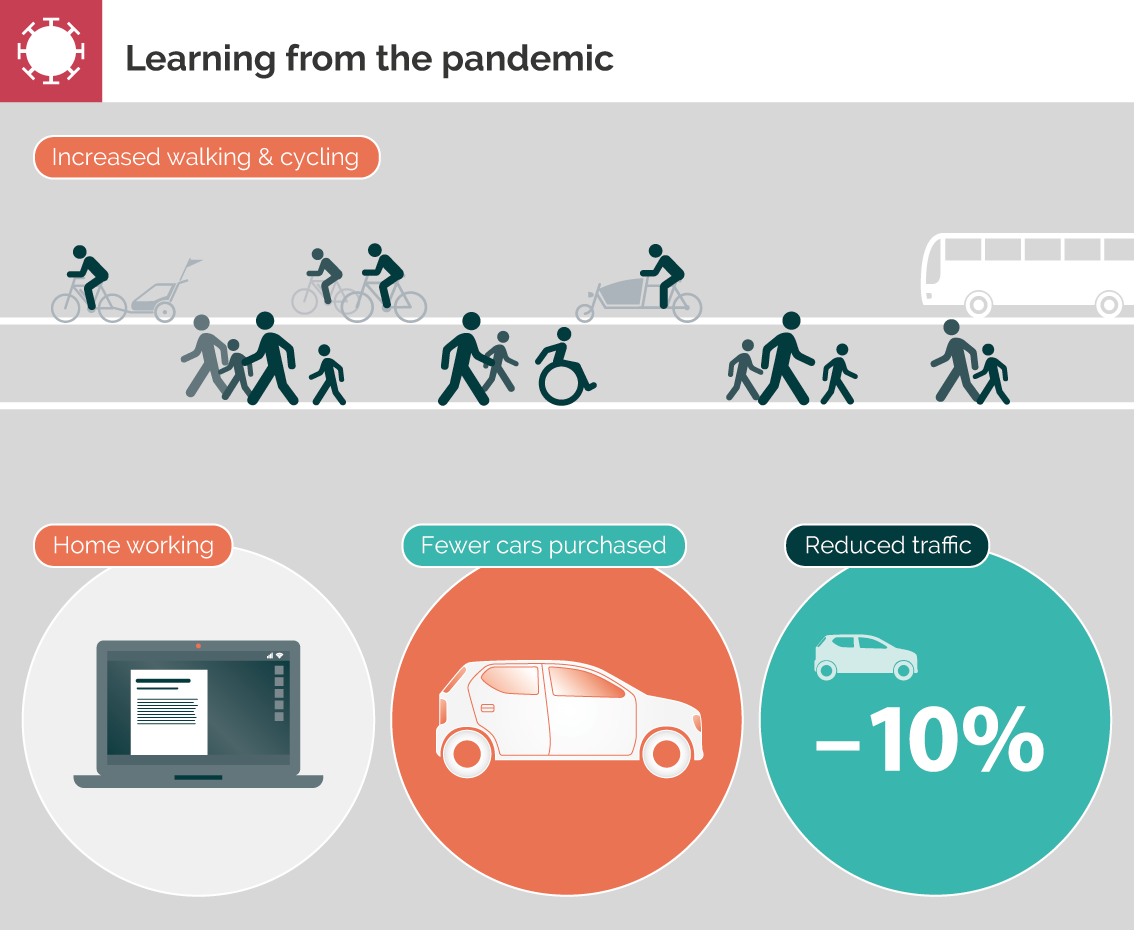
The Covid pandemic had profound effects on energy use in transport, but smaller effects in buildings and industry. Research to track changes is ongoing. Many practices have reverted to pre-pandemic norms, but it seems likely that some changes, particularly in transport practices, will persist.
Weekday car traffic post pandemic remains 10% below pre-pandemic levels. It is probable that historic commuting patterns will not be the same as future patterns. Covid reduced the use of public transport very significantly and, despite some funding support, recovery has been slow, and so is a key policy challenge [1]. There is some evidence of relocation away from towns and cities, which might tend to increase commuting distances. However, people are still buying fewer cars and home working has reduced overall traffic levels, although there is greater use of LGVs, with lockdown accelerating the trend to online shopping. The pandemic has boosted both cycling and walking. The former largely for leisure; the latter has been more resilient across time [2].
Demand for space heating is the largest single use of energy in the UK and drives its seasonal variation. Modelling studies based on pre-pandemic data show that home-working can increase this significantly [2]. In practice, during the pandemic, home energy use was less affected than travel by the major lifestyle changes that occurred during Covid lockdown. Electricity and gas use, corrected for other factors, rose by 8% and 6% respectively in year 1 of the pandemic and remained slightly higher until the onset of the cost of living crisis [3]. Initial survey data showed limited changes to self-reported thermostat settings, with some modest increases in appliance and hot water energy demand [4].
Evidence
- Less is more: Changing travel in a post-pandemic society | CREDS report, 2022
- The impact of teleworking on domestic energy use and carbon emissions: An assessment for England | Research paper, 2023
- The impact of COVID-19 on household energy consumption in England and Wales from April 2020 to March 2022 | Research paper, 2023
- Survey study on energy use in UK homes during Covid-19 | Research paper, 2021
Banner photo credit: Pat Whelen on Unsplash
